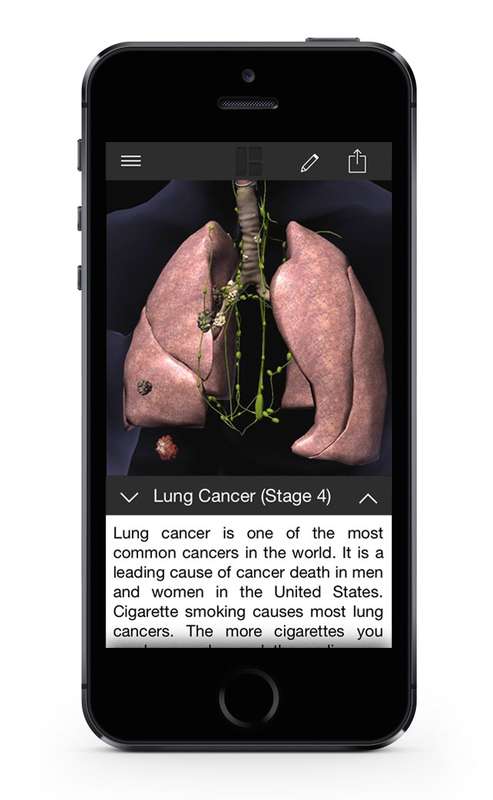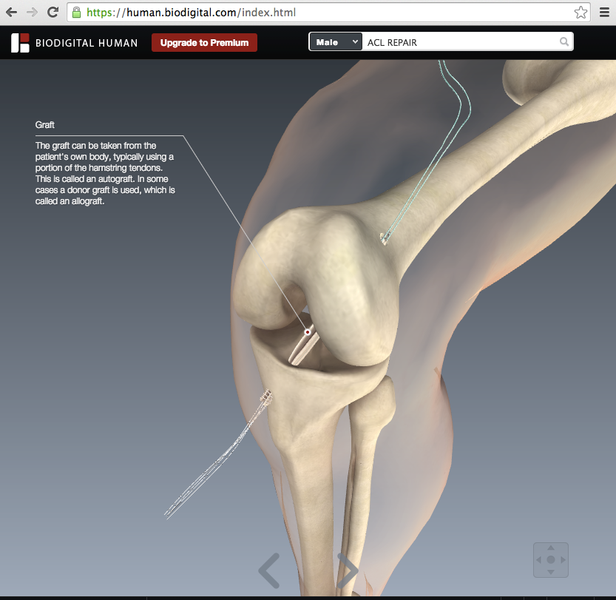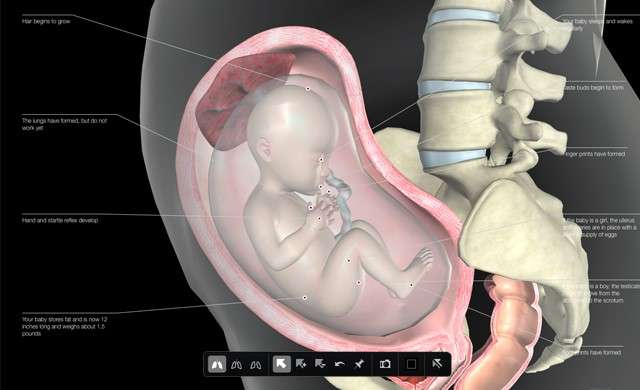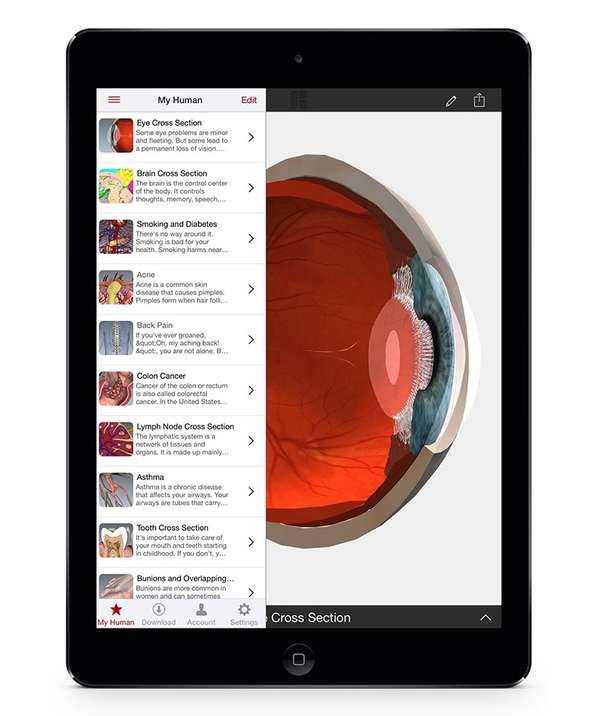 It has been hailed as the equivalent of Google Maps for the human body by The New York Times, and now the award-winning mobile-friendly platform BioDigital Human is looking to change the way healthcare information is shared, consumed and understood.
It has been hailed as the equivalent of Google Maps for the human body by The New York Times, and now the award-winning mobile-friendly platform BioDigital Human is looking to change the way healthcare information is shared, consumed and understood.
The platform has rolled out a mobile-friendly version that is now available for iPad, iPhone and Android. (Check out below for a peak at an animated view of the brain.)
CEO and co-founder Frank Sculli, sat down with Bioscience Technology to walk us through the platform, which just won silver in the research and education category at the 2015 Thomas Edison awards, and to discuss exciting possibilities for the biomedical community.
So what is the BioDigital Human?
ABC News said, “Think: Google Earth meets the human body.” And they were right.
“It’s an interactive virtual model of the human body that addresses major deficiencies in health education communication,” Sculli said told Bioscience Technology. “So from diagnosis, to drugs, to devices, to medical record information, it provides a much more engaging way to really understand health concepts.”
The platform
Consumers and companies alike are using the platform, which is now accessible anytime on almost any device, in innovative visual ways to get the information they need. The s o-called ‘framework’ of fully 3D platform (which runs in a browser with no plug-ins) is a very detailed set of anatomy and physiology that you can click through and see different levels of detail. The male and female forms are comprised of over 7,000 individually segmented objects, all tagged with standard medical ontologies, so the body can be mapped to structured sources of health data.
o-called ‘framework’ of fully 3D platform (which runs in a browser with no plug-ins) is a very detailed set of anatomy and physiology that you can click through and see different levels of detail. The male and female forms are comprised of over 7,000 individually segmented objects, all tagged with standard medical ontologies, so the body can be mapped to structured sources of health data.
In addition to anatomy, BioDigital Human has a robust library of health conditions. For example, a patient recently diagnosed with stage 4 lung cancer could search and see a 3D visualization of the disease and see an atlas of pathology, genes and treatment.
Read More: Creating Multi-Component Systems in One 3D Printing Step
Researchers can dig deeper to see cellular processes and look at things at the molecular level. The platform has a very detailed model of the brain and heart that can now be leveraged to look at different types of therapeutics and how those therapeutics manifest themselves.
Device companies like Actavis, are using it to train their clinicians on proper use of their devices, Sculli said.
There’s also a transparency mode, which allows you to look at organs in the context of others, search specifics, slide through those objects like Google Earth and look at them in isolation.
People can pin, annotate, and customize a view that they can save associated with their profile. This is the start of one of BioDigital’s big goals – to take the platform from a generic view of the male and female to one that’s more personal.
Where does the information come from?
The 3D models are based on a hybrid of information, including imaging data such as MRI or CT scans to reconstruct, or input from expert clinicians, surgeons and anatomists. The company has a formal association with NYU Langone Medical Center and a number of other close academic affiliations, which Sculli said ensures that “all of our models are peer reviewed for scientific accuracy.” The company has also worked closely with top health care centers such as Memorial Sloan Kettering Cancer Center and the Hospital for Special Surgery.
Variety of applications
From biotech to classrooms to everyday people looking to find more information about a recent diagnosis, the applications for the BioDigital Human truly seem endless. “Daily, people are bringing us incredibly imaginary and innovative ways they would like to leverage the virtual human body and that’s just fantastic to see,” Sculli told Bioscience Technology
Technology
Sculli gave an example of a parent trying to understand their child’s congenital heart disease, as a meaningful way individuals can use the program. “Seeing inside the body immediately puts it in a format that empowers them to make more educated decisions and speak to their clinicians more intelligently,” he said. The BioDigital Human recently snagged a Webby award for best health website, and previously won the South by Southwest ‘Interactive’ award.
Another meaningful way the platform is being used is for virtual surgery by the non-profit organization Smile Train. Smile Train repairs children’s cleft lips and palates around the world, and now uses the technology to train their doctors on how to do the involved surgery. Surgeons can peel layers back, and ‘scrub in’ on the surgery, while hearing a guided narration from experts.
The future
BioDigital’s next big goal is to take the platform from a generic male and female form, to a more personalized one that can be updated using real individuals' data. The platform is already being used by businesses, like biotech and pharmaceutical companies to help convey concepts and have a more novel way for people to interact with their products and content, according to Sculli. “We also have an API and allow businesses to leverage the system in that capacity.”
The co-founders of BioDigital have been in the 3D game for over a decade, providing visualization solutions for a range of clients in the healthcare industry from biotech to medical schools. “We utilized 3D technology to better communicate concepts that they were most challenged by,” Sculli said. While this technique was very effective, there was a downside – it was costly and took a long time to develop. Sculli said it was uncovering this problem that was the basis for bringing this technology to market.
Video-based education has its limitations, Sculli said. It’s a passive learning experience, is difficult to update and doesn’t scale well. These issues were addressed with the launch of the interactive virtual body.
Sculli sees the platform being embedded in all sorts of context much in the way Google Maps is, except in a healthcare context.
“This fundamentally changes the way these [healthcare] concepts are communicated,” Sculli said. “You take something that’s traditionally very hard for an individual to understand, like the progression of disease, and show it within the human body and it makes it much more easily consumable and digestible.”
Ultimately the platform is about the power of information, about something that is specifically near and dear to all of us – the human body.


